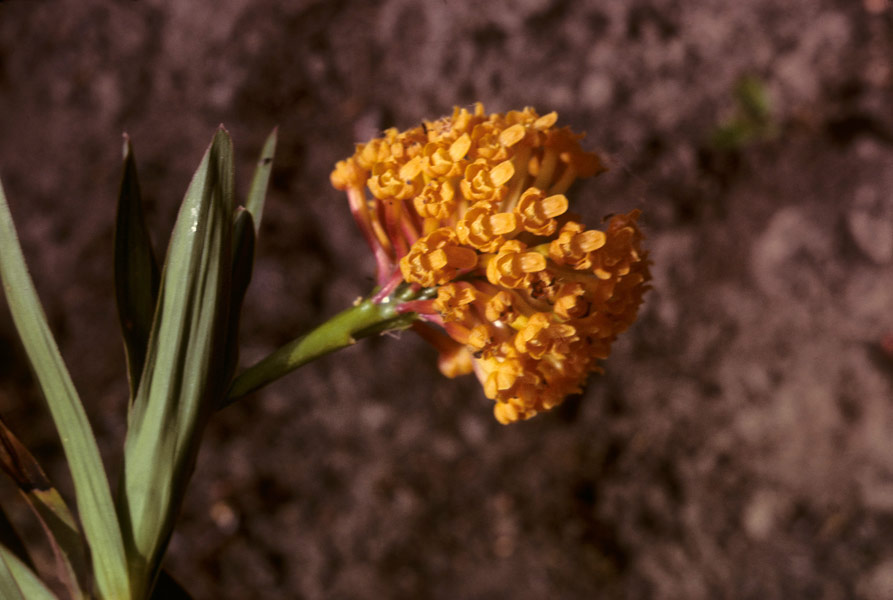

Epidendrum hemiscleria Rchb.f. 1862 GROUP Hemiscleria
Photo by © by Karl Senghas
Photo by © Eric Hunt, plant grown by Gerardus Staal
Photos by Dr Leslie Garay Copyright ©, and the Dr Leslie Garay Archives
TYPE Drawing by © Jimenez, Hágsater & E.Santiago and The AMO Herbario Website



Common Name The Nodding Epidendrum
Flower Size .4" [1 cm]
Found in Ecuador and Peru in montane cloud forests as a giant sized, cold growing epiphyte at elevations of 2700 to 3300 meters with cane-like, suberect to arching to sub-pendant stems enveloped completely by numerous, distichous sheaths and carrying narrowly elliptic, acute apically, membraneous leaves that blooms in the summer on a terminal, slightly shortened, bright red, short, subcapitate, many flowered inflorescence with an umbel of several, simultaneously opening fleshy, orange colored flowers at the apex.
"Epidendrum hemiscleria belongs to the GROUP Hemiscleria which is characterized by the caespitose habit, simple stems, with numerous, oblong-lanceolate leaves sub-parallel to the stem, an apical inflorescence with a strong peduncle and very thick rachis with, racemose, sub-globose, dense, produced in a fascicle around the rachis and carrying fleshy, hard, bright orange-yellow flowers . The species is recognized by the erect stem with the peduncle of the inflorescence dark purple, a pair of tubular, acute spathaceous bracts at the base, the ovary bright red, and the lip with sub-orbicular lateral lobes; the disc of the lip with 3 narrow, parallel, low keels, and the apex of the mid-lobe shallowly emarginate. Epidendrum occidentalis (Christenson) Hágsater & E.Santiago (Epidendrum hemiscleria Rchb.f. subsp. occidentalis Christenson) has arching-pendent stems, the peduncle of the inflorescence reddish, without any spathaceous bracts at the base, the ovary greenish yellow, and the lateral lobes of the lip sub-quadrate; the disc of the lip has a pair of parallel, low, wide, short keels and a circular hump in front, the apex of the mid-lobe is truncate, not emarginate. Christenson described the difference in size of the plants, as well as the erect or arching inflorescence, but these features seem variable in both species." Hagsater etal 2010
Synonyms Diothonea nutans (Lindl.) C. Schweinf. 1944; Hemiscleria nutans Lindl. 1853; Epidendrum rhopalorhachis Kraenzl. 1905
References W3 Tropicos, Kew Monocot list , IPNI ; Orchids of Peru Vol 2 Schweinfurth 1959 as Diothonea nutans; Icones Planetarum Tropicarum Plate 471 Dodson 1989 drawing fide; Rudolf Schlechter Die Orchideen Band 1C lieferung 42 - 43 pg 2626 - 2762 Brieger 2001 photo fide; Native Ecuadorian Orchids Vol 2 Dodson 2001 photo fide; Icones Orchidacearum 13 Plate 1338 Hagsater 2010 drawing fide; Icones Orchidacearum 13 Plate 1363 Hagsater & Dodson 2010 See Recognition section;
--------------------------------------------------------------------------------------------------------------------------
----------------------------------------------------------------------------------------------------------------------------